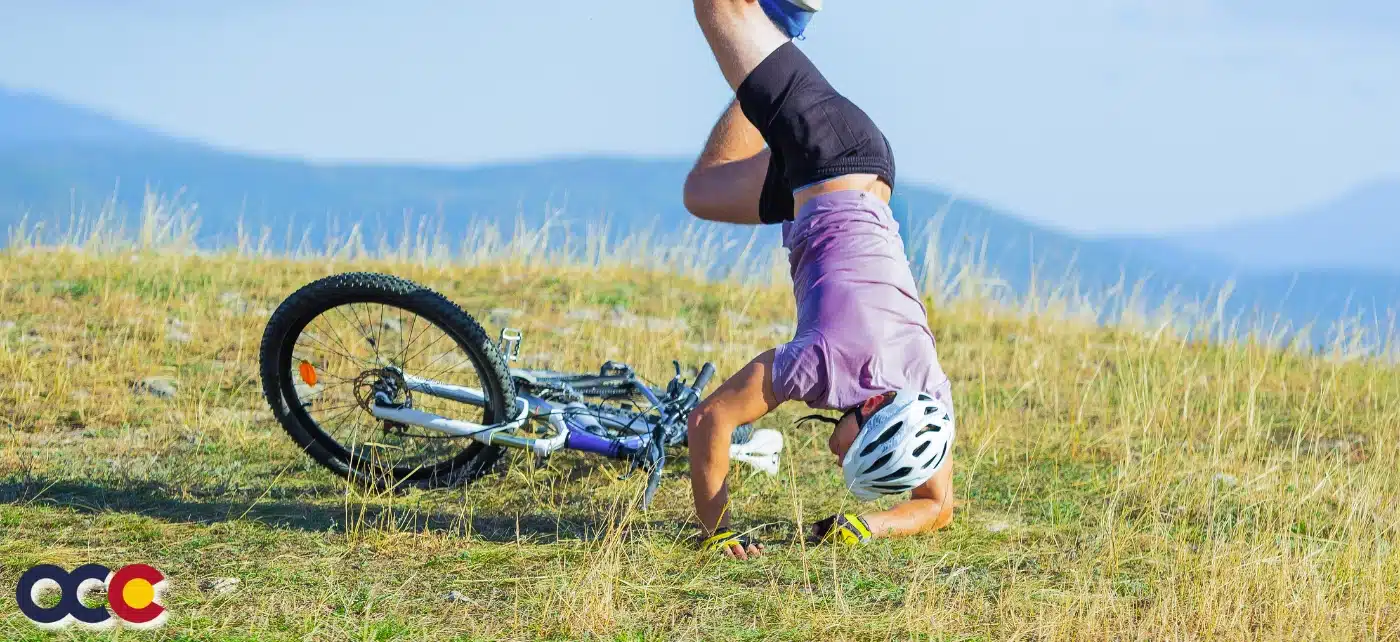Thoracic fractures can be extremely painful, particularly if there is displacement of bone fragments or injury to surrounding soft tissues. Delayed treatment of thoracic fractures can increase the risk of complications such as spinal instability, deformity, nerve damage, and paralysis. All of which may be permanent and irreversible. In the case of thoracic fracture, you need a surgeon at the top of their field. Someone whose experience and skill you can trust. At OCC – Advanced Orthopedics & Sports Medicine Specialists in Denver, Parker, or Aurora, Colorado, their highly accomplished surgeons are known and respected for their diagnosis and treatment of thoracic fractures. When it comes to thoracic fracture, you can count on getting not just the best treatment but the best results.
OVERVIEW
People sometimes refer to a spinal fracture as a broken back. When a bone in the spine collapses, it is called a vertebral compression fracture (VCF). Vertebral compression fractures are the most common injury to the thoracic spine. Osteoporosis causes more than 1.5 million vertebral compression fractures each year. They are almost twice as common as other fractures typically linked to osteoporosis, such as broken hips and wrists. Forty percent of all women will have at least one vertebral compression fracture by the time they are 80 years old. More than 150,000 thoracic fractures each year are caused by traumas. Men are 4 times more likely to have a traumatic spinal fracture than women. Once someone has had a vertebral compression fracture, they are five times more likely to develop another compared to someone who’s never experienced one. Prognosis and recovery from a thoracic fracture may differ from patient to patient. The difference is due to the type of injury and the level of severity.
ABOUT THE THORACIC SPINE
The spine is made up of three segments. When viewed from the side, these segments form three natural curves. The “c-shaped” curves of the neck (cervical spine) and lower back (lumbar spine) and the “reverse c-shaped” curve of the chest (thoracic spine). 33 vertebrae make up the spine. Vertebrae are the individual bones that interlock with each other to form the spinal column. The thoracic spine consists of 12 vertebrae numbered T1 to T12. Each number corresponds with the nerves in that section of the spinal cord. These nerves branch off, transmitting signals between the brain and major organs, including the lungs, heart, liver, and small intestine. Thoracic vertebrae are unique in that they have the additional role of providing attachments for the ribs. This makes the thoracic spine more rigid and stable than the cervical or lumbar regions, making it the least common area of injury along the spine. While it’s primarily designed for stability, force absorption, and keeping the body upright, the thoracic spine is capable of a wide range of movement and its mobility is vital to overall health and function.
WHAT IS THORACIC FRACTURE?
There are several types of thoracic fractures, which can vary based on the mechanism of injury, severity, and location within the thoracic spine. These include compression fractures (wedge), burst fractures, flexion-distraction (seat belt injury/Chance fracture), and fracture-dislocation. A stable versus an unstable fracture is another way a provider will classify a thoracic fracture. With a stable fracture, the injury that broke the vertebrae didn’t push or pull them out of their usual place in the spine. One is less likely to need surgery with a stable fracture. Unstable fractures happen when the injury moves the vertebrae out of their usual alignment. There’s a much higher chance of the need for surgery to repair the broken vertebrae and a higher risk for dangerous complications that can affect the spinal cord.
CAUSES
Most thoracic fractures are the result of acute (high-energy) trauma, such as falls from height, sports injuries, gunshots, or automobile accidents. Another common cause is osteoporosis, which thins the bones, often to the point they are too weak to bear normal weight. Other risk factors include cancer (especially if receiving chemotherapy or radiation therapy), using corticosteroids for a long time, hyperthyroidism, bone infections (osteomyelitis), kidney disease, anorexia nervosa, vitamin D deficiency, smoking, and drinking excessive alcohol.
SYMPTOMS
Localized moderate to severe back pain that worsens with movement is a cardinal feature of thoracic fractures, irrespective of the exact cause. But depending on the location and severity of injury, patients may present with other symptoms:
- Sharp, intense pain in the back getting increasingly worse over time
- Swelling or tenderness
- Changes to posture—a slump or stoop that causes one to lean forward
- Tingling or numb feeling in the back that might run down arms or legs caused by pinched nerves and nerve damage
- Height loss—one might get noticeably shorter over time (sometimes up to 6 inches)
- In cases in which the fracture results in injury to the spinal cord, there may be neurological dysfunction in the lower extremities, such as incontinence and the loss of ability to control the bladder or bowels.
NON-SURGICAL TREATMENTS
The majority of spine fractures, especially in the thoracic spine, can be successfully treated non-surgically. How the thoracic fracture is treated depends on factors such as what caused the fracture, what type of fracture it is, and where exactly in the spine the broken vertebrae are. Non-surgical treatments can vary for the different types of fractures, but some that may help all of them might include:
- A back brace—immobilizing the affected area is crucial for healing
- Ice or heat therapy
- Over-the-counter pain medications such as acetaminophen (Tylenol) or nonsteroidal anti-inflammatory drugs (NSAIDs) like ibuprofen (Advil, Motrin) can help alleviate pain
- Adequate bed rest
Doctors may recommend physical therapy if a thoracic fracture has interrupted one’s regular exercise routine long enough that the core muscles—located in the back, thighs, abdomen, and buttocks—have lost strength. Physical therapy may also be recommended if these muscles have never been properly conditioned. Refusing to do physical therapy can greatly increase the time for the injury to heal.
WHEN IS SURGERY INDICATED?
As with non-surgical treatments, surgery can vary for each type of fracture. Some instances where surgery may be necessary include:
- Failed conservative treatment
- Spinal instability
- Neurological compromise
- Severe displacement
- Multiple fractures
- Unstable fracture patterns
- Persistent pain or disability
- Progressive deformity of the spine
GETTING THE RIGHT DIAGNOSIS. GETTING THE RIGHT DOCTOR.
Unlike many other conditions, diagnosing a thoracic fracture is not as straightforward as one would think. Many people never notice they have a compression fracture. This is especially true if the broken vertebrae happen over time from osteoporosis and not after trauma. If a patient is experiencing pain, it is often just thought of as general back pain — such as from a muscle strain or other soft-tissue injury — or as a common part of aging. As a result, about two-thirds of the thoracic fractures that occur each year go undiagnosed and, therefore, untreated. It is especially important to accurately diagnose vertebral compression fractures that are due to osteoporosis, as several potential adverse effects can occur, including permanent spinal cord injury, nerve damage, and paralysis. At Advanced Orthopedics in Denver, Parker, or Aurora, Colorado, their capable and accomplished surgeons are renowned specialists in the diagnosis and treatment of every type of thoracic fracture. For example, a compression fracture can be easy to miss on an X-ray. This is why your doctor might order other imaging to help pinpoint the injury, such as a CT scan, MRI, or nuclear bone scan. Whether the thoracic injury is caused by osteoporosis or trauma, the attentive and caring surgeons at Advanced Orthopedics will be there to help you gain mobility and a restored quality of life as quickly as possible. Schedule an appointment today.









